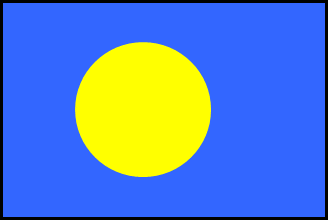ここから、関係詞(関係代名詞、関係副詞)が関わるリスニング問題を解いていきましょう。
関係詞が含まれる英文は、長くなる傾向があるので、内容の理解があやふやになりがちです。
ここでしっかり関係詞が含まれる英文を理解できるようトレーニングしましょう!
1)

W1: Can you describe them?
M2: Sure, the lenses are square-shaped, and uh… the parts that fit over the ears are rounded.
W2: OK, I’ll check.
W1: どんなメガネか説明してもらえますか?
M2: はい、レンズは四角で、えーと…耳にかかる部分は丸いんです。
W2: わかりました、確認してみます。
ポイント:
M2のセリフで、”the parts that fit over the ears are rounded” の部分に関係代名詞が使われている。
the parts (that fit over the ears) are rounded
上記のthatが関係代名詞で、( )内が関係代名詞節。
意味は、「耳にかかる部分が丸い」です。
出典:センター試験2008年度本試験 問2
2)
What will the man find out about his neighbor?
①How long he has been a doctor
②What hospital he works at
③When he started the volunteer work
④Who he volunteers for
M1: Yes. Who did you interview?
W2: My aunt. She’s a doctor. How about you?
M2: My neighbor. He volunteers at an animal shelter.
W3: Good for him! How long has he been doing that?
M3: Oh, I’ll have to ask him.
M1: うん。君は誰にインタビューしたの?
W2: 私のおばさん。彼女は医者なの。あなたは?
M2: 僕の近所の人。その人は動物保護施設でボランティアをしているんだ。
W3: 素晴らしいわね!その人は、どのくらいそれをしてるの?
M3: ああ、彼に聞いてみなきゃ。
W3で女の子が「どれくらいの期間、それ(ボランティア活動)をしてるの?」と聞いているが、期間を尋ねるHow longが使われている選択肢①は、先ほど述べたように誤り。③When he started the volunteer work「いつボランティア活動を始めたか」が適切。なぜなら、いつ始めたかわかるということは、ボランティア活動をしている期間がわかるから。
ポイント:
W1で”interviewing someone you admire” とあるが、someoneの後ろに関係代名詞の目的格が省略されている。someone (whom) you admire。これで、「あなたが尊敬する人」という意味。
出典:センター試験2018年度本試験 問16
3)
What is common to the feature found on both flags?
①The color.
②The meaning.
③The position.
④The shape.
③Palau’s flag is similar to Japan’s because it features a single circle.
③パラオの国旗は、1つの円が特徴で、日本の国旗と似ている。
→形として、日本の国旗にもパラオの国旗にも1つの円がある。したがって、両方の国旗に共通の特徴は、④The shape(形)である。
ポイント:
次の2つの文で、関係代名詞whichが使用されています。
⑤Blue is used to represent the ocean, which the nation depends on for food.
⑦Instead of the sun, as on the Japanese flag, the circle represents the moon, which is traditionally thought to be important in the life cycle and customs of the people.
関係代名詞の使われている文は、1文が長いので、関係代名詞の前でいったん意味の区切れがあると考えて理解すると良いです。
⑤の文なら、次のように理解すると良いです。
⑤Blue is used to represent the ocean, 青は海を表すために使われている。
which the nation depends on for food. 海に、その国は食べ物のために頼っている。
ここで、whichは基本的に直前の名詞を指す代名詞なので、この文のwhichはthe oceanを指していると考えると良いです。
そのため、which the nation depends on for foodはthe ocean the nation depends on for foodだということになります。語順を自然な形に直すと、the nation depends on the ocean for food(その国は、海に、食べ物のために頼っている)となります。
もちろん、このような作業をリスニングをしながらすることはできませんが、ネイティブや英語上級者は無意識のうちに、上記の内容を理解しながら聞いている感じです。
⑦の文も次のように理解すると良いでしょう。
⑦Instead of the sun, as on the Japanese flag, the circle represents the moon, 日本の国旗における太陽ではなく、円は月を表している。
which is traditionally thought to be important in the life cycle and customs of the people.
月は、伝統的に人々の生活や習慣に重要であると考えられている。
whichが直前の名詞のthe moonを指しているので、which is traditionally thought to be importantを、the moon is traditionally thought to be importantと理解すると良いです。
参考情報:パラオ国旗

出典:センター試験2015年度本試験 問22
4)
What does the speaker say about the phrase?
①Greek people used it to refer to mathematics.
②It is well known because Shakespeare used it.
③It only refers to difficult foreign languages.
④Shakespeare was the first to use it.
⑤このフレーズは以前から別の作家によって使われていましたが、シェイクスピアがこのフレーズを使ったことで広まり
→シェイクスピアがこのフレーズを使ったことで広まった、とのことなので、②It is well known because Shakespeare used it. が正解になる。
ポイント:
関係詞が次の2つの文で使われている。
③If someone tries to explain a theory from physics or mathematics that we cannot comprehend, we could say, “It’s all Greek to me.”
④This phrase appears in William Shakespeare’s play Julius Caesar, where one Roman tells another that he couldn’t understand somebody because he spoke Greek.
③の文では、”a theory from physics or mathematics that we cannot comprehend” の部分で、thatが関係代名詞で、that we cannot comprehendが前の部分を修飾している。
④の文では、”where one Roman tells another that he couldn’t understand somebody because he spoke Greek” の部分で、whereが関係副詞となっている。
出典:センター試験2014年度本試験 問22